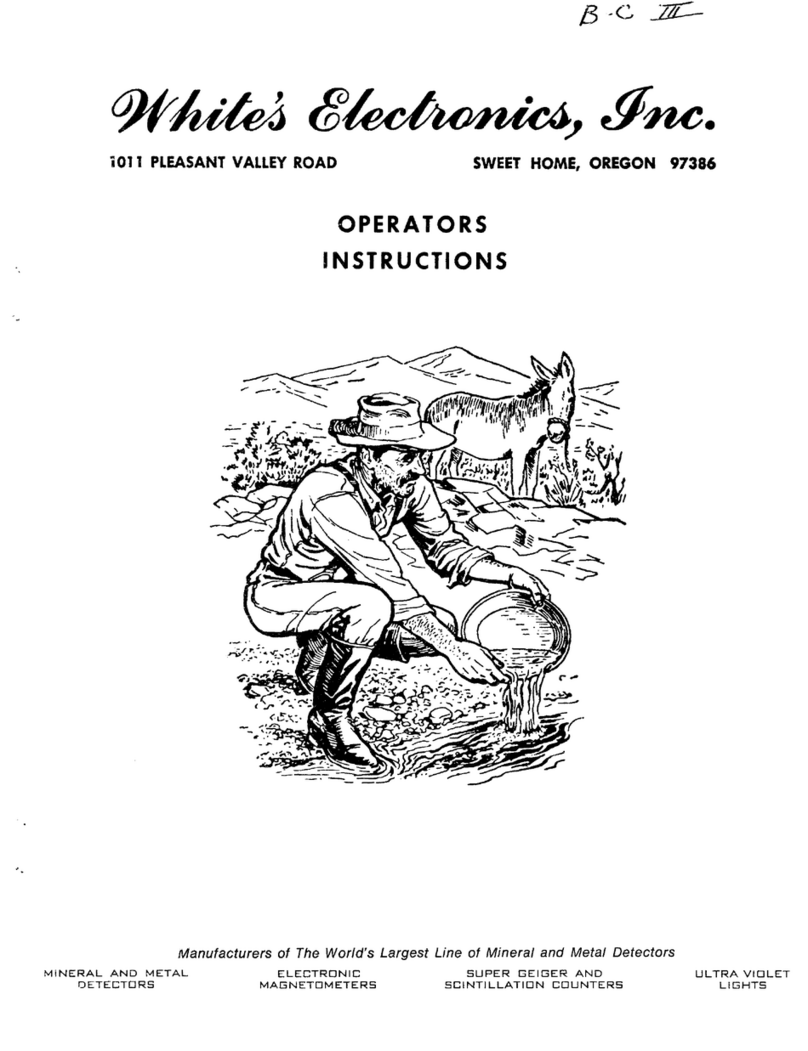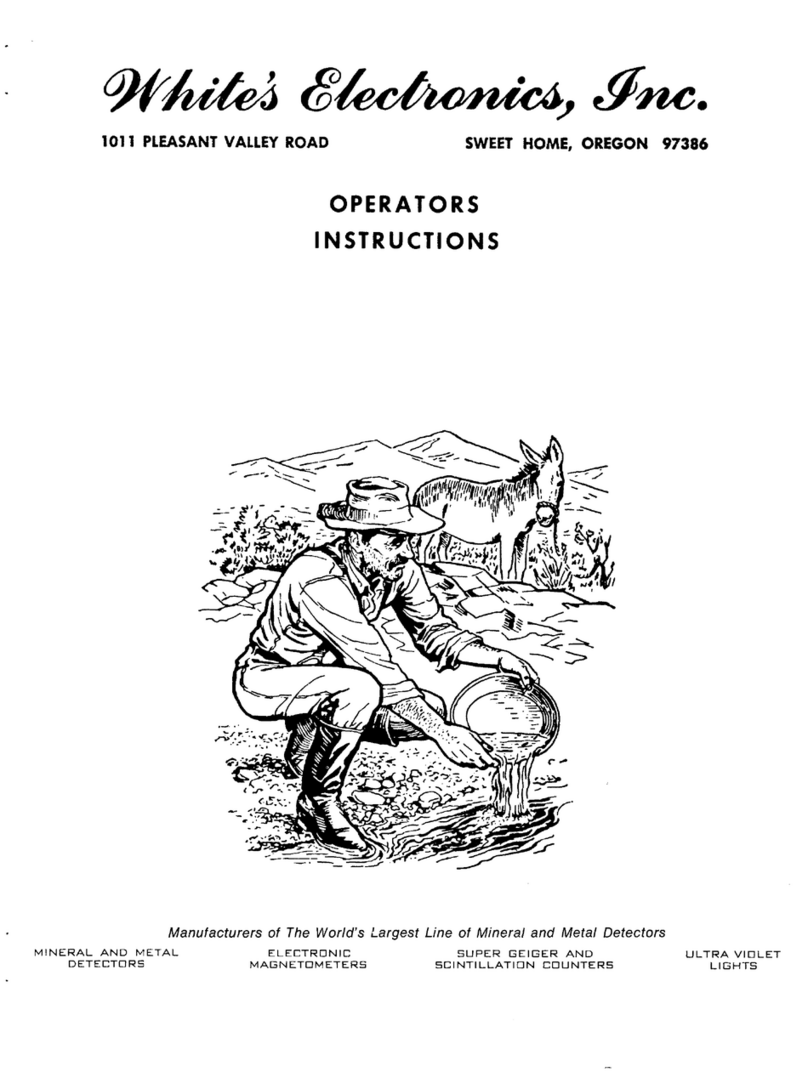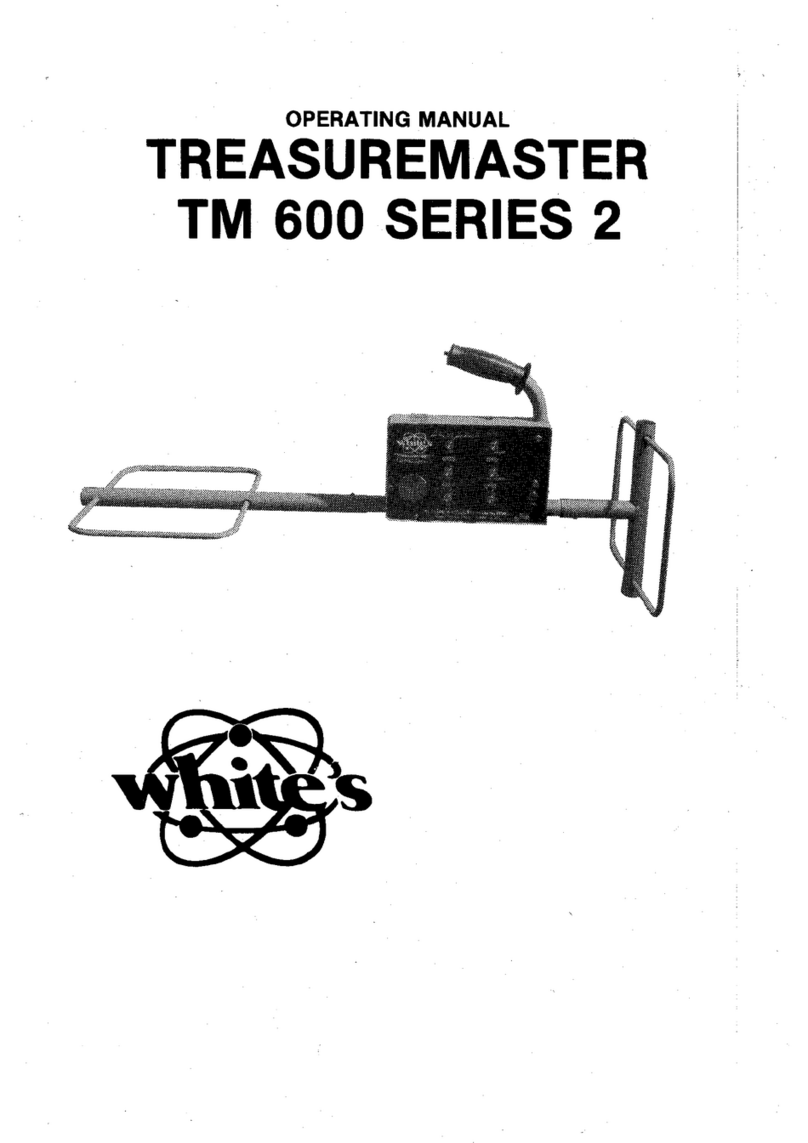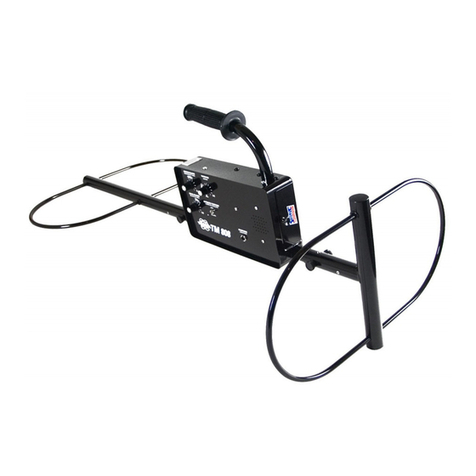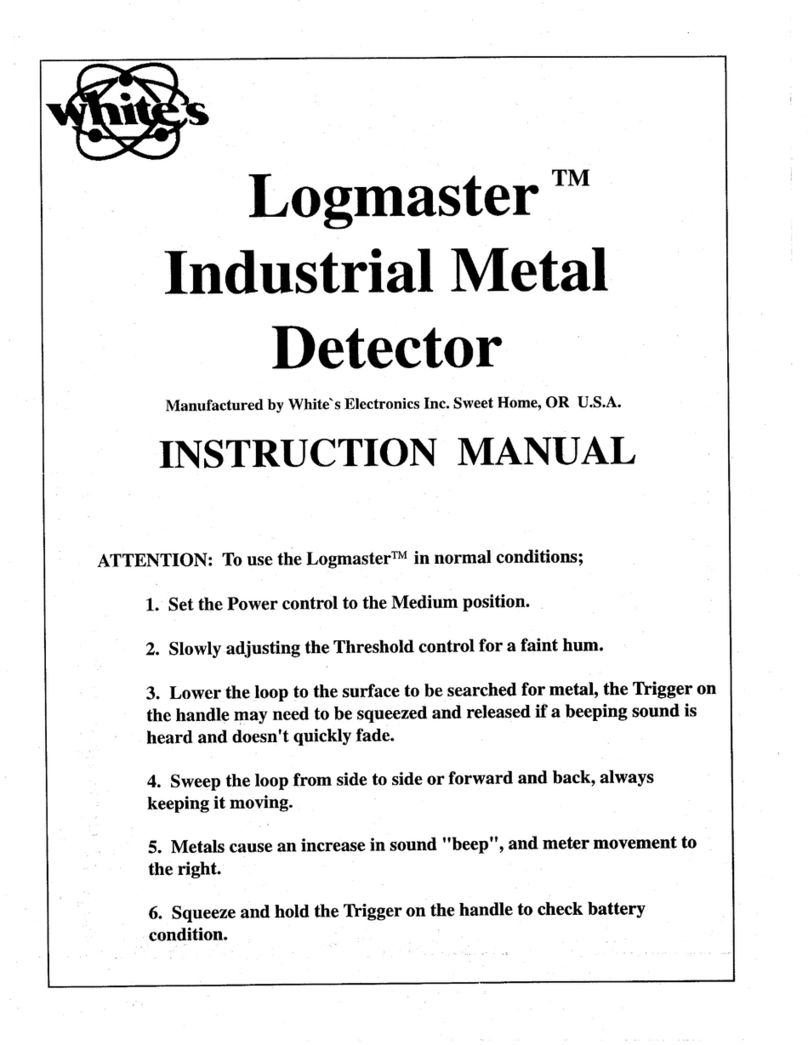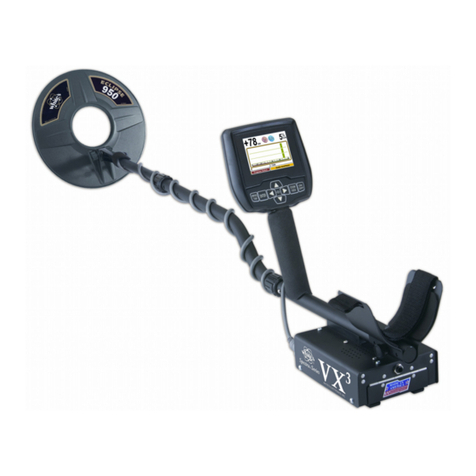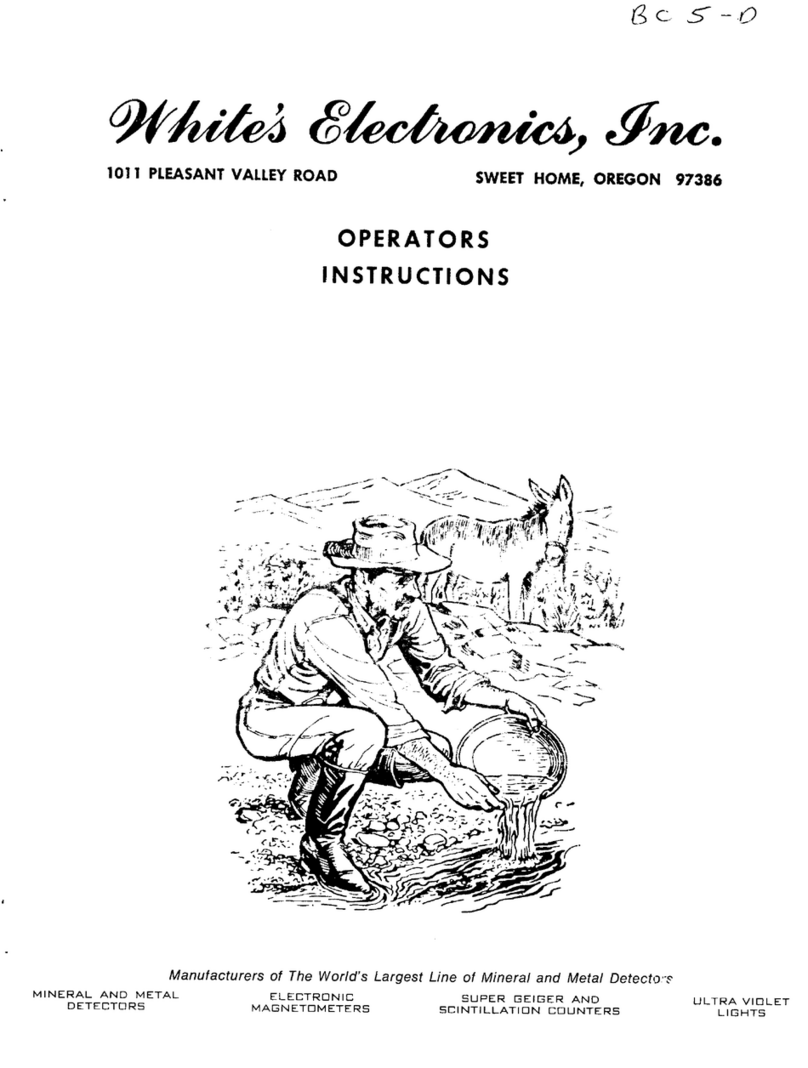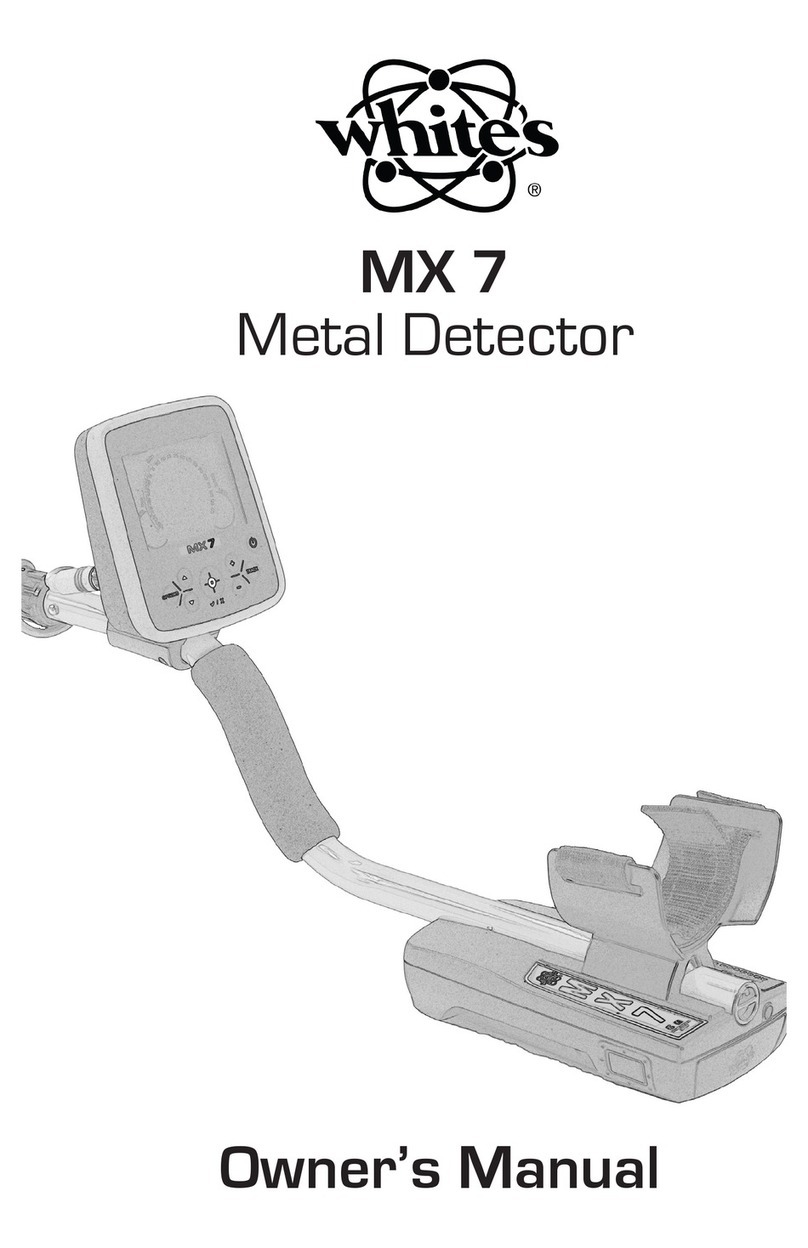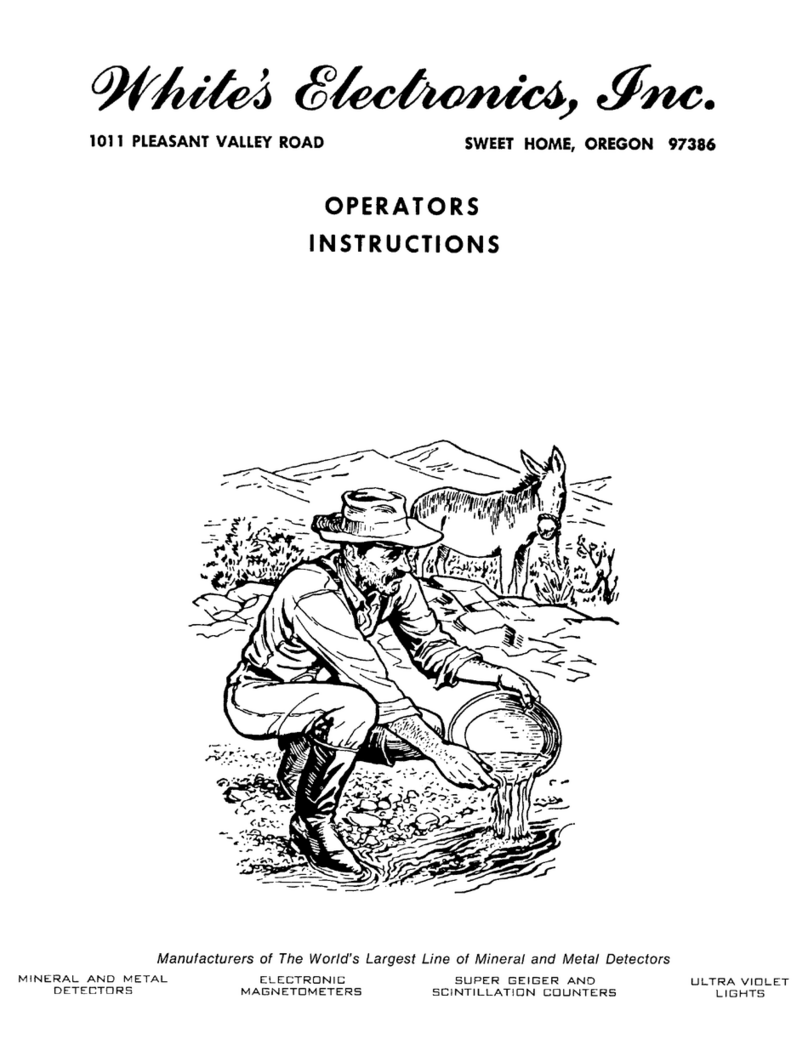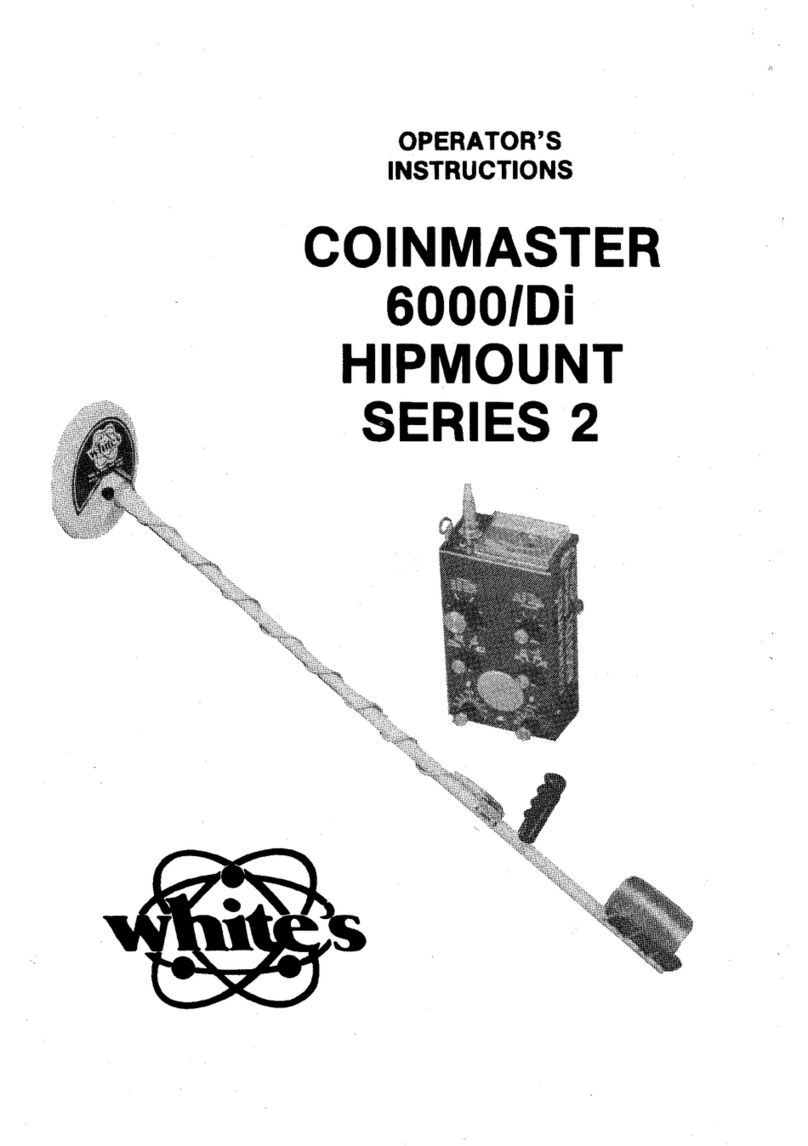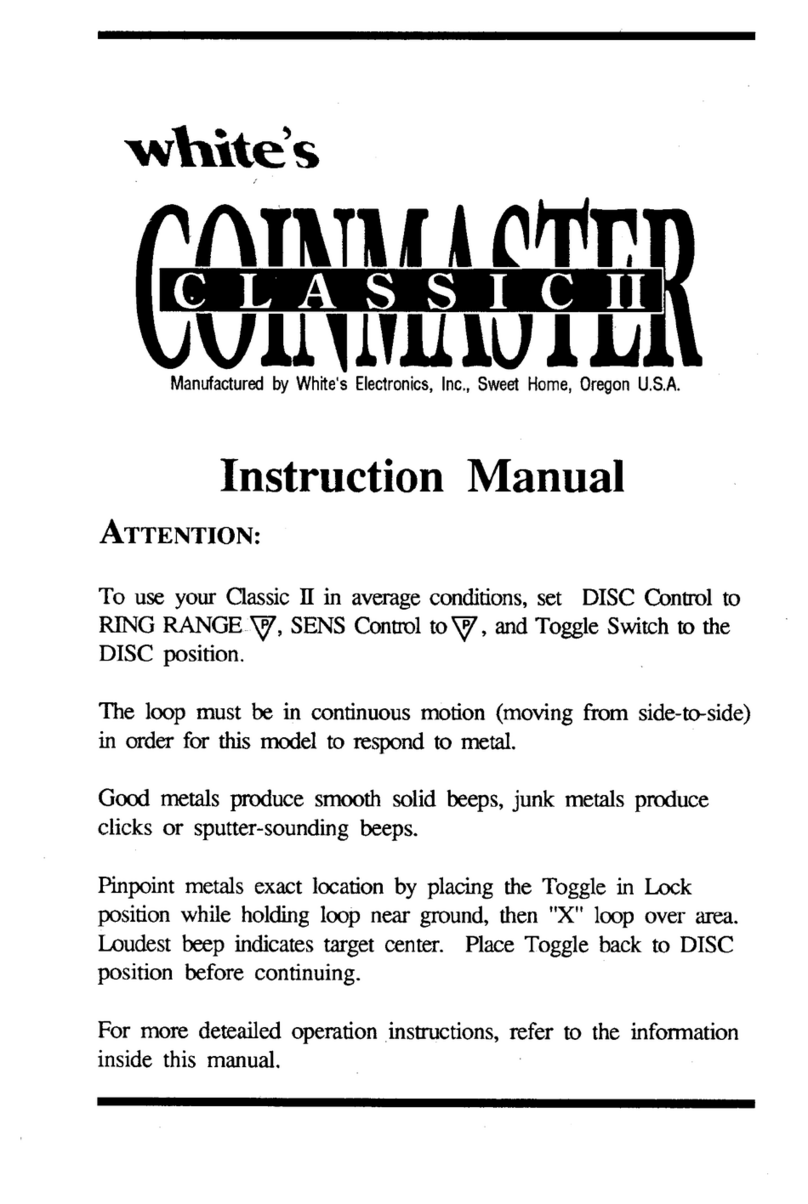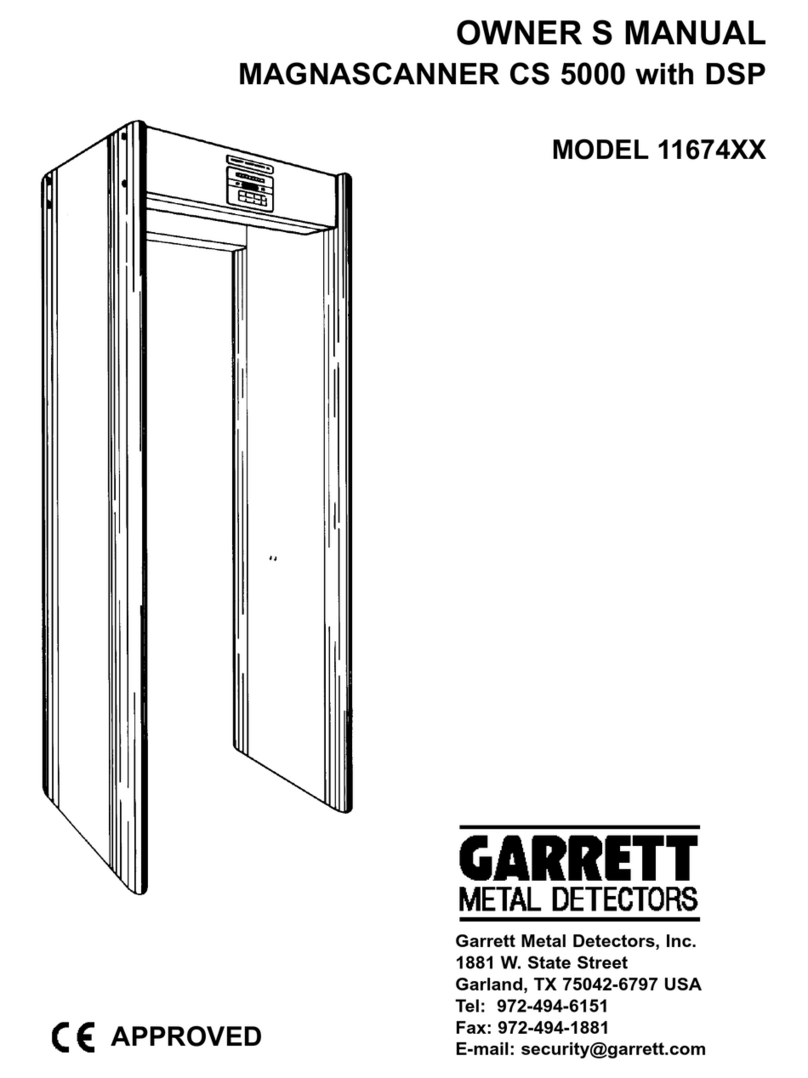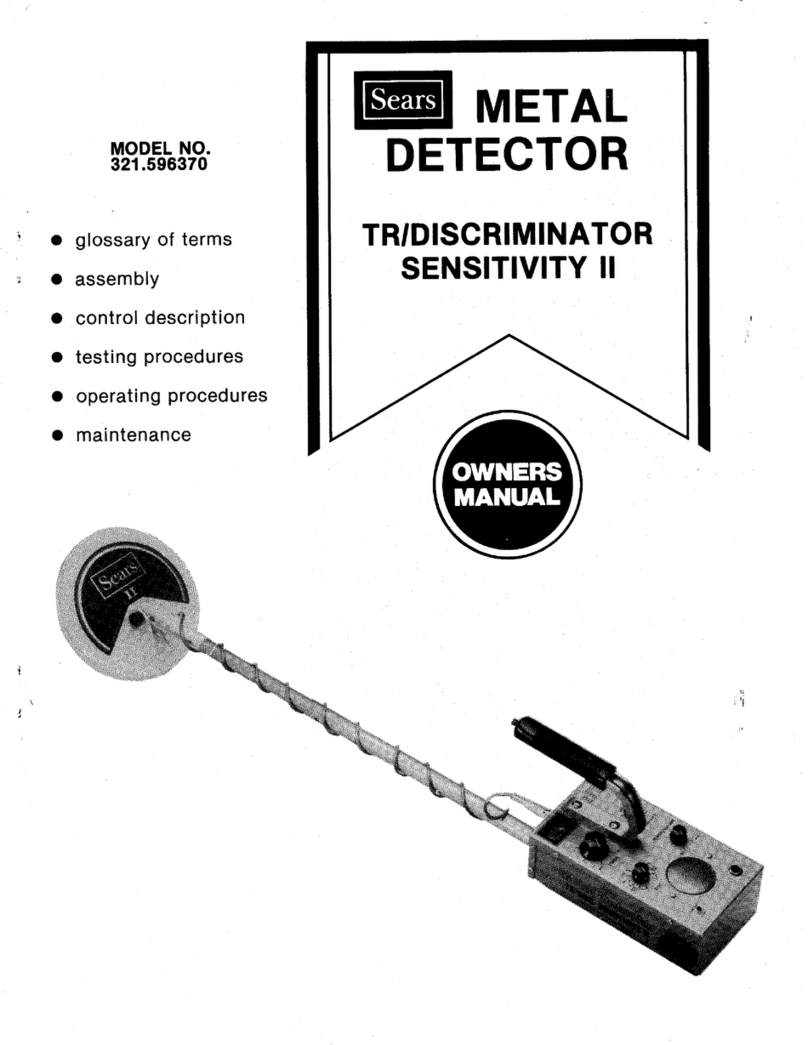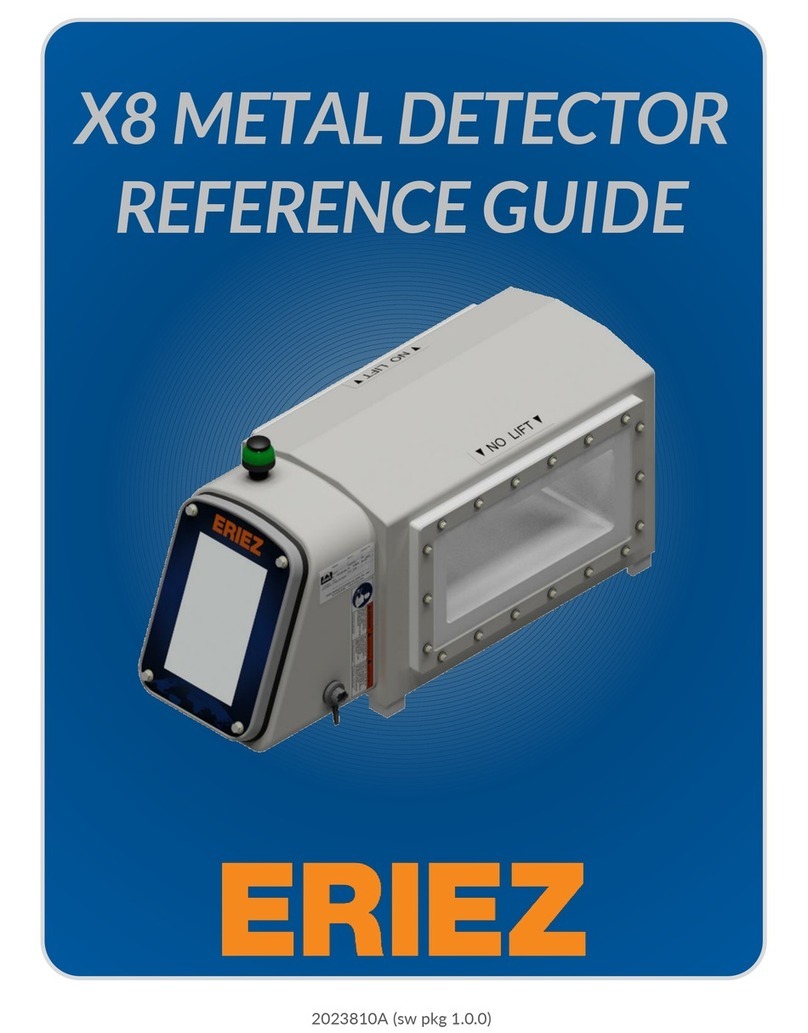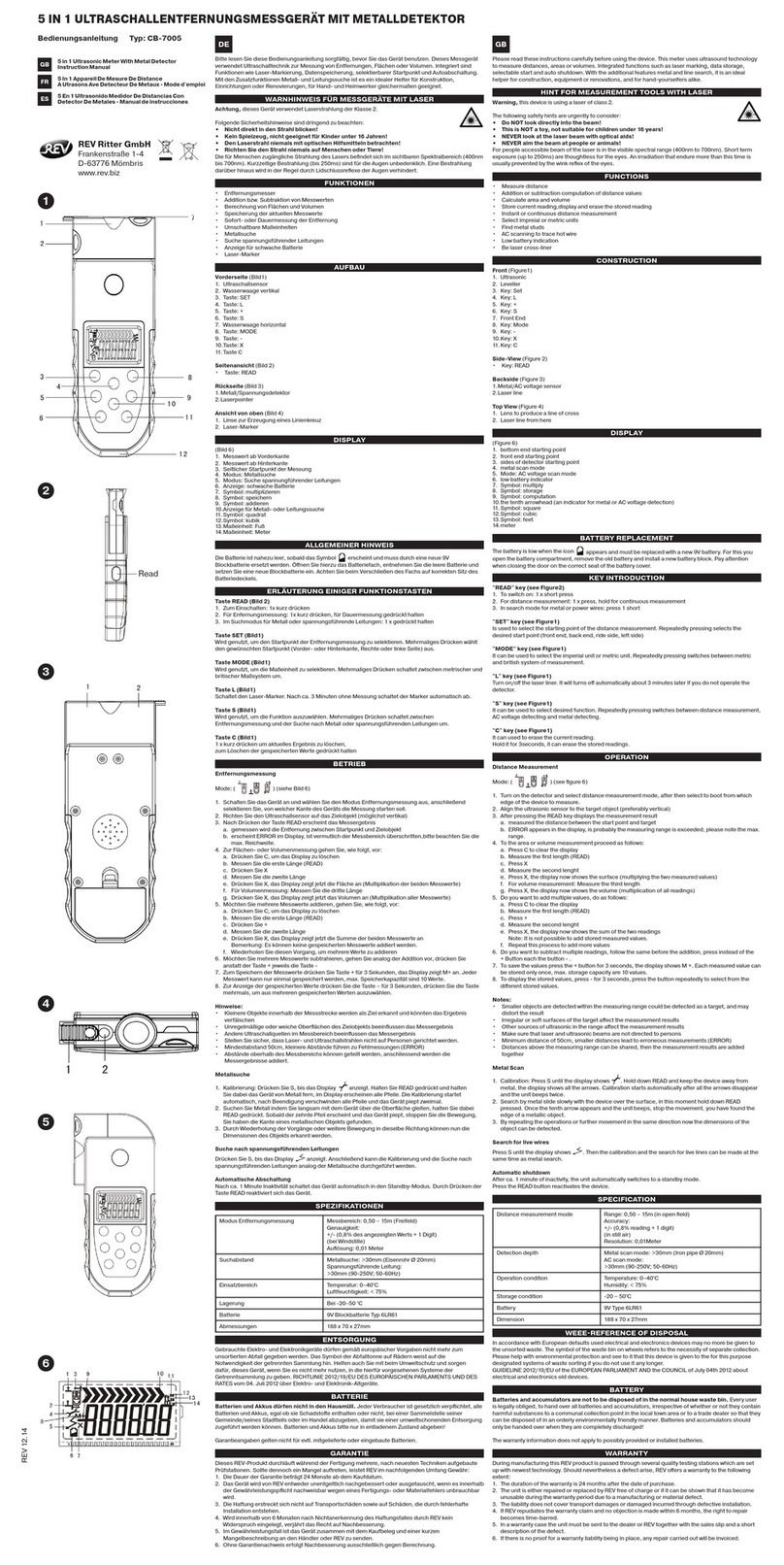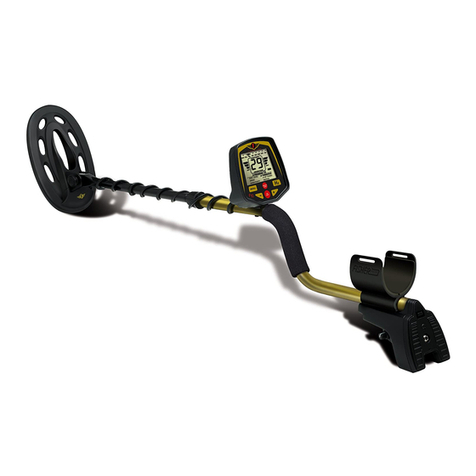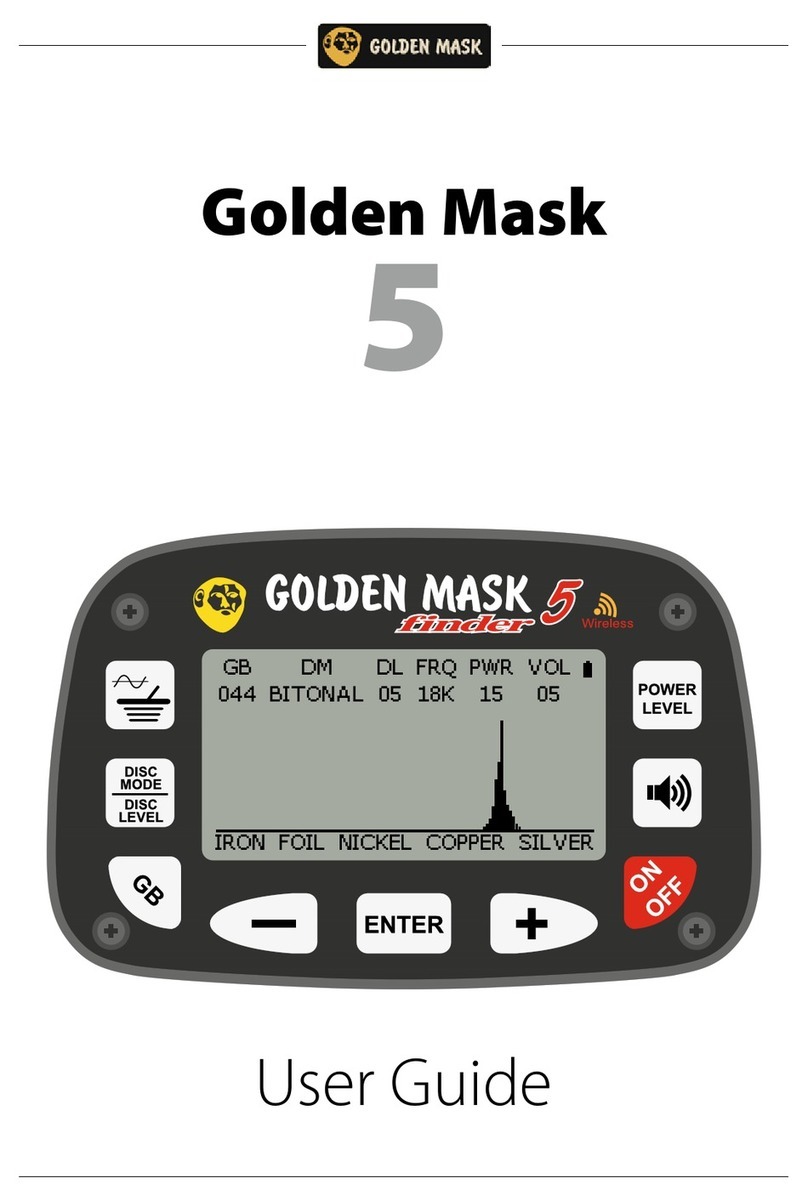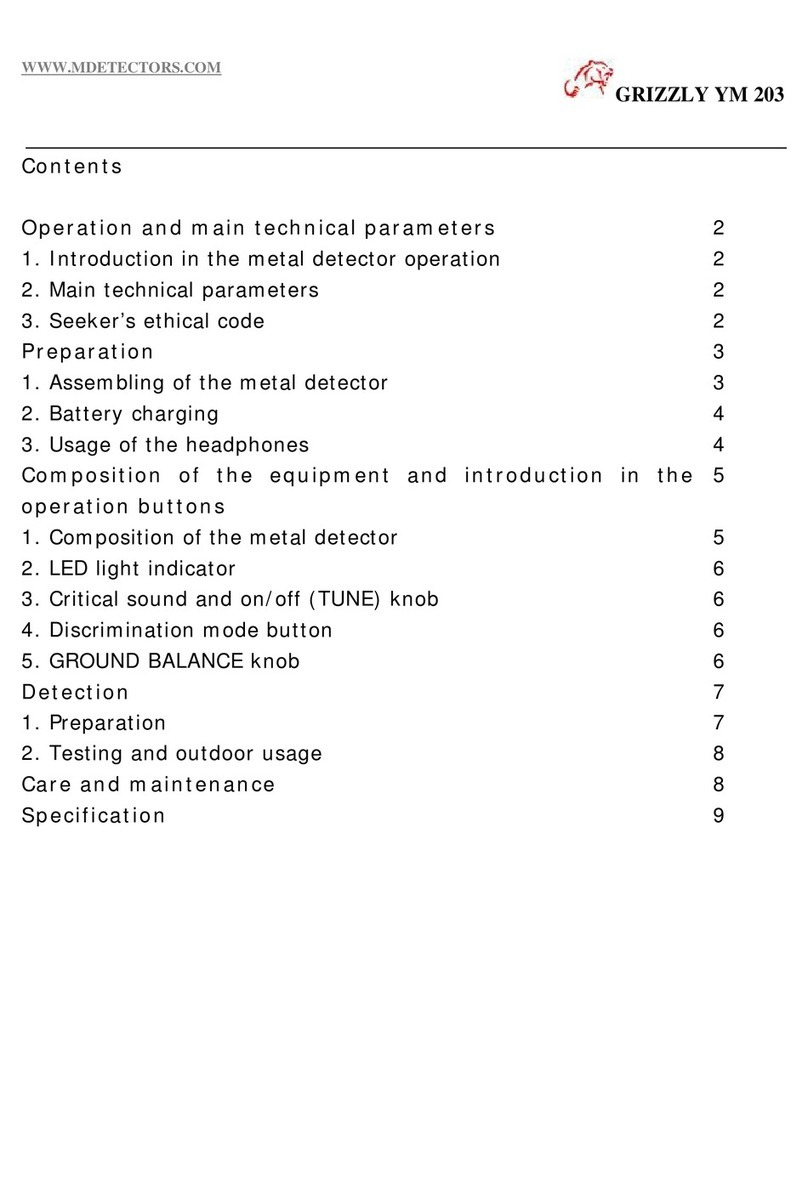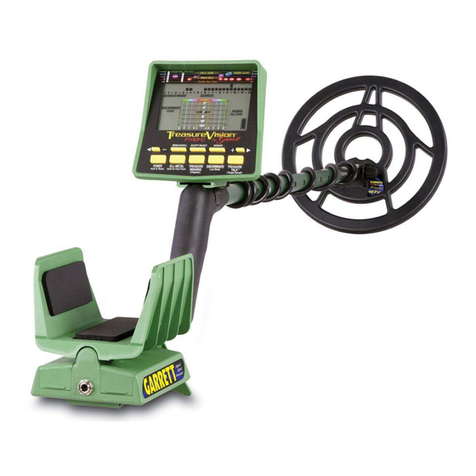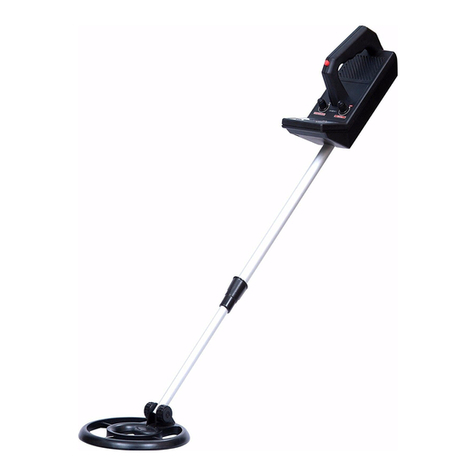
Proper Care of Your Detector
The lollowing are precautions you should.take to protect your instrument lrom harm, insure its long life, and attlid
nullifying the warrantY
Cleaning: The loop and rod or probe are waterproof. They can be cleaned with fresh water and a mild cteanser- Afrer
cleaningl however, dry the instrument thoroughly. Caution! The instrument case is not waterprool, and water-il allow-
ed to enter lt-may damage electronic components.
Weather Conditlonr: Prolect your detector lrom excessively cold weather. Freezing can damage the electrcriic
components, the case and/or the batteries. Excesslve heat can also damage the instrument. Never leave it in the sun-
It's best to lay it in the shade when temporarily not in use. lf it's lelt in a car on a hot day, cover it with a blankel or
something similar to protect it lrom the direct rays ol the sun, and then leave the windows slightly open to permit ven-
tilation. Needless to say, protect youl detector if you operate it in the raln, as water may get into the instrument case'
Sali Water: Salt water is very corrosive! lmmediately alter your detector has been exposed to salt water, rinse it
tnJi"rJnfy *itn'fresh water, being careful not to allow water to enter the instrument case. Then wipe it with a cloth
dampened wiih fresh water and dry it lhoroughly.
Slorage: 6 you plan to store your detector for any length of time, unsnap the batteryand remove it lrom the instrument'
WhenLver your detector is not in use, turn the VOLUME knob all the way to the"PWR OFF" position.
Service And lverranly tnlormation: lf your new metal detecior is ever in need of service, ship it to us at the factory
address below or to one of the Service Centers listed on the back ol the warranty statement. lnsure it fully, prepay the
charges, and enclose a letter describing the nature of the problem. As long as your detector is under warranty there is
no charge other than a small handling and postage fee.
Read your warranty card carefully. lt describes completely what is covered and the length ol the coverage. lf you have
any qiestions don't hesitate to write us. We will be happy to answer any questions you may have.
HELPFUL HINTS AND TIPS
1. ,,How deep will it go?" Detection depth is determined by five main factors.
a. The SIZE ol the object
b. The SIZE of the looP.
c. The LENGTH OF TIME the object has been buried.
d. The SKILL of the oPerator.
e. The ground MINERAL CONTENT.
The longer an object has been buried, the belter you will be able to detect it. A chemical reaction called a "halo
elfect" between such objects as silver or copper coins and the surrounding soil may cause your detector to
register a much larger inirease in volume than might otherwise be expected lor a smafi coin' ll the halo effect is
strong enough, your detector may contlnue to register even after you have dug up the coin.
2. ,,Wnai will my detector locate?" Sitver, lead, copper, bottle caps, tin loil, pull tabs, cartridge cases, rings' brass
and tin cans are just a lew of the conductive obiects that can be detected. Your detector will not locate sticks,
rags, bones, paper, wood or other non-metallic obiects.
3. Learn how to interpret the ditlerent types of responses from your detector. A hail lying flat in the ground will
sometimes produce a double or single reading depending upon whether your loop passed across it lengthwise or
across its width. So it's a good idea to sweep your finds from several diflerent directions to try to learn as much as
possible about the object you have located. Coins will usually only produce one reading regardless of sweep
direction.
4. Rather than waste time, check around the trees for junk items such as foil, pull tabs, bottle caps, etc. This will
frequently indicate whether or not someone has already been in the area with a detector.
5. Always "criss-cross" an area when hunting it.
6. After you have dug up a coin, always check the hole again lor more. As many as 10 coins have been found in one
hole!
T. When beachcombing the best place to look lor coins is near the concession stands.
g. Gheck the shallow rvater in swlmming areas. Most rings and coins are lost when people enter the water'
9. lf you make plans lor coinshooting, check the history records of the area.
10. Always carry a plastic bag for your detector in case you get caught in the rain.
11. Nevei ask permission to treasure hunt over the phone. People tend to visualize you using a pick and shold. mak-
ing large holes.
12. Join a local historical society or get acquainted with its members.
13. ln lawn areas, us6 a screwdrlver of no more than eight inches as your tool. Limit the size ol the hole to a
MAXIMUM of h^ro inches ln diameter. Don',t lOrget to fillin the hole. Public and privato offbisls and property
ownsrs will be more likely to allow contlnued treasure hunting if you do no. environmental <tamqe-
